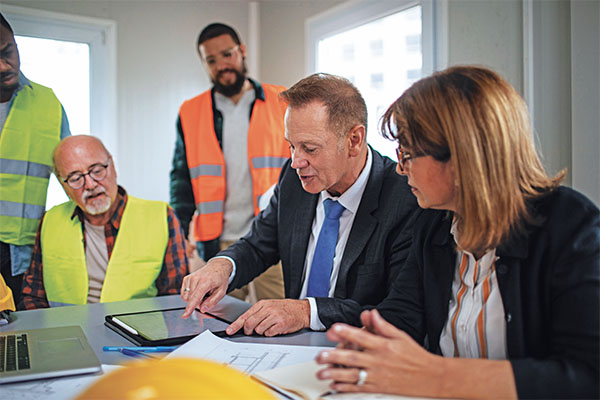Building a just and fair safety culture
Leaders from around the global LPG industry examined how to foster an effective safety culture during a webinar hosted by the World LPG Association in September.
Here are some of the best practices panelists discussed:

Safety should be a priority on all levels of an organization, say propane industry leaders. (Photo: mihailomilovanovic/E+/Getty Images)
Training and education: Set up employees for success by providing high-quality training and education on a continual basis. Reward good behavior.
“Safety communication cuts through and resonates with employees, so the messages really need to be informative and let employees know relevant facts so that they can remain safe in the workplace,” says Megan Sharp, vice president of operations support at Ferrellgas.
Responsibility and accountability: Explain to employees how personal responsibility and systemic organizational processes contribute to a safer environment for everyone.
Often, when an accident happens, our first instinct is to blame the person closest to the incident, but that’s not usually constructive, says Bram Gräber, CEO of SHV Energy. He suggests first looking at potential systemic issues, say, with driver scheduling, that may lead to an incident. Then, consider the actions of everyone involved, not just the employees closest to the incident.
Stop and speak up: When all employees are empowered to call attention to and discuss dangers, near-misses or accidents on the job, companies are better equipped to identify and address systemic problems.
“Everyone has the right to stop working or not to do things,” emphasizes Markus Dreier, vice president of operations at UGI International. “If there’s an issue, they should stop instead of finding shortcuts.”
Technology, data and reporting: Data can show trends that require systemic solutions. Report all near-misses and accidents to ensure leadership knows about safety threats and can do something about them.
All-hands approach: Transparency and commitment to safety must be practiced across all levels of the organization.
“Safety culture is more than just following rules and policies or managing metrics,” says Sharp. “Safety culture is a set of shared values, attitudes, beliefs and actions at all levels of the company. Contribution and engagement from all employee levels and a positive safety culture unites everyone around a common goal to measurably improve safety habits.”
Steps to success
Propane retailers tell LP Gas about the safety culture at their companies during the LP Gas Growth Summit, held in September in Orlando, Florida.
LP Gas: What are some of the steps your company takes to ensure the safety of your employees and customers?
Jason Edwards, Pacific States Petroleum (California): “We have a quarterly safety meeting highlighting all of the local challenges based on time of season, specific incidents that could occur, and kind of redefining how we operate – any changes that could potentially happen in the future. We also educate our customers by sending out the duty to notify and making sure they understand all of the safety aspects of propane. We keep [safety] top of mind on a daily basis, through regular interactions, making sure everyone understands how important it is to be safe.”
Steve Farkas, Sharp Energy (Delaware): “We take safety to the field, right down to the grassroots level. We control it at the district level. We look at safety not so much as a core department but as a mindset. We want that safety mindset in our people. We want our people to understand their jobs, understand how to do a simple job safety analysis on every situation they encounter, be able to understand the environment they work in, and the product and equipment they work with.”
















